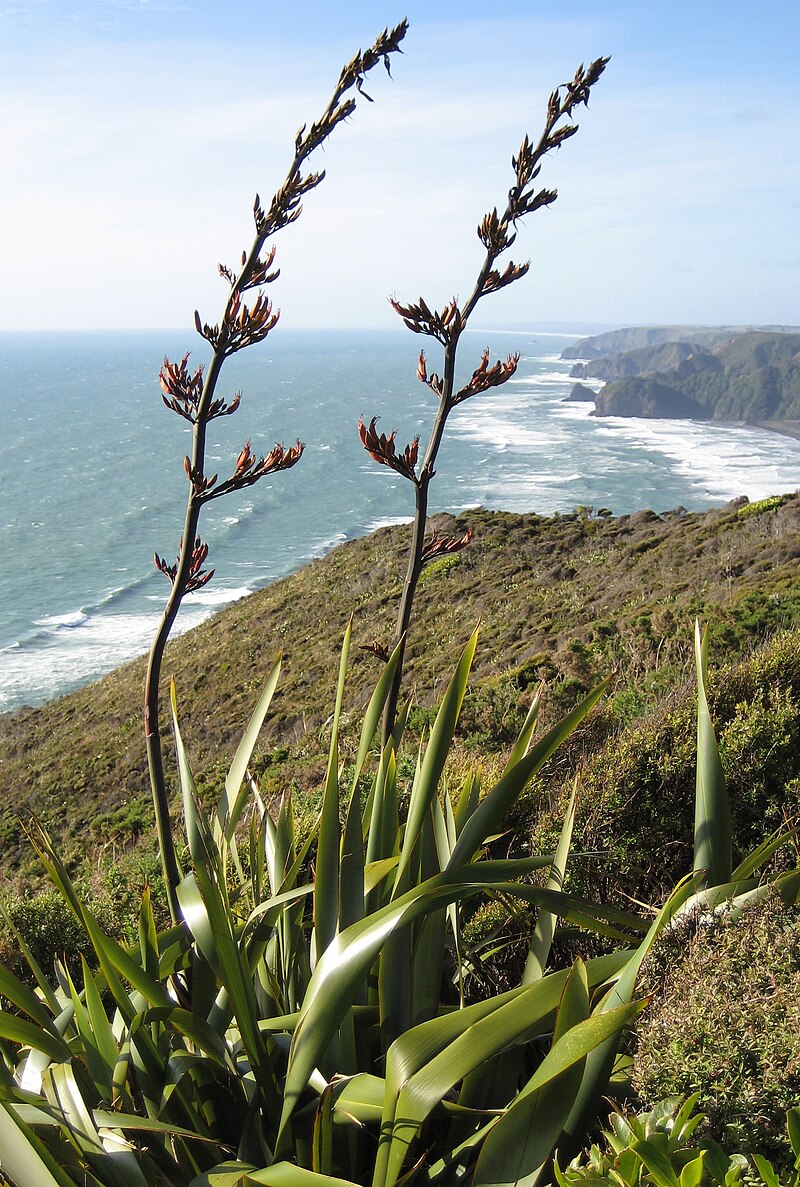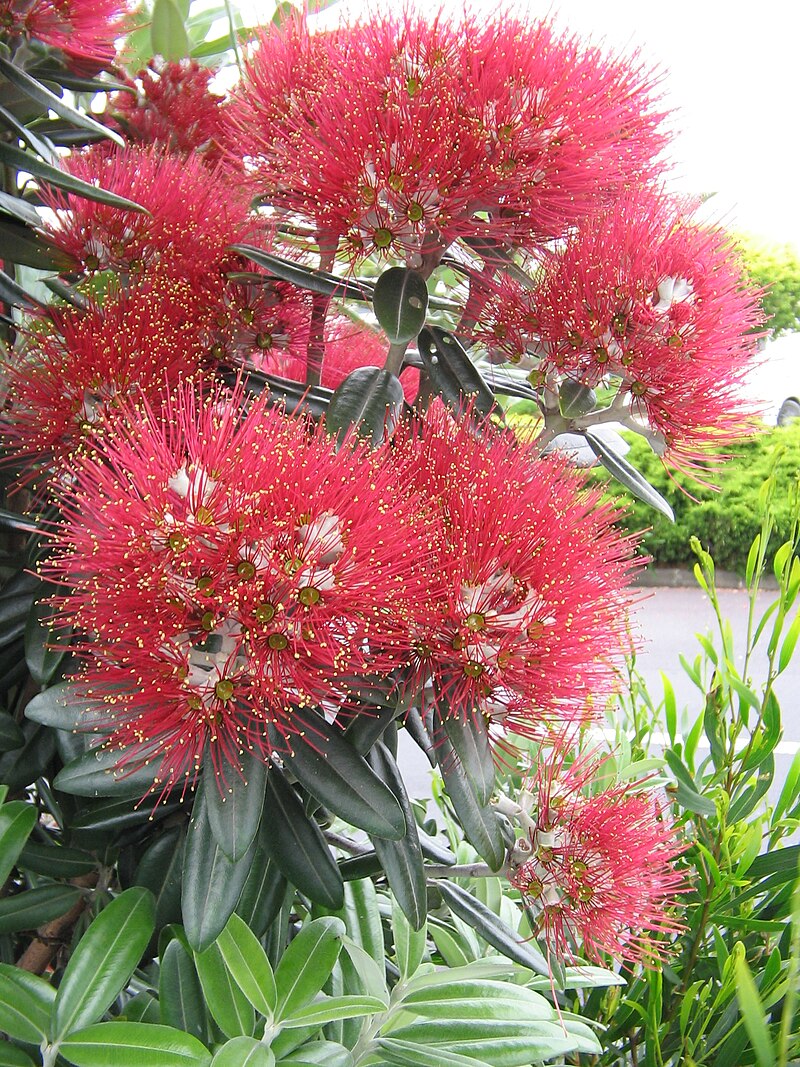Leptospermum scoparium
Leptospermum scoparium
Leptospermum scoparium, commonly known as mānuka, is a hardy shrub native to New Zealand. It is renowned for its small, aromatic leaves and white to pink flowers, which are a vital source of nectar for bees producing mānuka honey.

Image credit: Leptospermum scoparium on Wikipedia
Quick Facts
| Height | 2-5 meters |
|---|---|
| Water Needs | Low to moderate |
| Light | Full sun to partial shade |
| Frost Tolerance | High |
| Growth Rate | Moderate |
| Lifespan | 20-30 years |
Climate Best Suited To
Leptospermum scoparium thrives in a variety of climates, from coastal to alpine regions. It prefers well-drained soil and can tolerate a range of conditions, making it adaptable to different environments.
| City | Climate Suitability |
|---|---|
| Whangārei | Ideal |
| Auckland | Ideal |
| Hamilton | Ideal |
| Rotorua | Ideal |
| Gisborne | Ideal |
| New Plymouth | Ideal |
| Napier | Ideal |
| Wellington | Ideal |
| Nelson | Ideal |
| Christchurch | Moderate |
| Dunedin | Moderate |
| Invercargill | Moderate |
Growing Requirements
Soil Requirements
Leptospermum scoparium prefers:
- Well-draining, sandy soils
- Neutral to slightly acidic pH
- Rich in organic matter
Light Requirements
This plant thrives in:
- Full sun to partial shade
- Protected from harsh winds
Water Requirements
Leptospermum scoparium requires:
- Low to moderate watering, especially in dry periods
- Good drainage to prevent root rot
Uses & Significance
Garden Uses
- Specimen shrub
- Hedging and screening
- Native gardens
- Erosion control
- Wind breaks
Cultural Significance
- Traditional medicinal plant for Māori
- Source of high-value mānuka honey
- Essential oil extraction
- Ecological restoration
Ecological Value
- Important nectar source for native insects
- Pioneer species in regenerating forests
- Habitat for native wildlife
- Soil stabilization
Seasonal Care Calendar
Spring
- Begin regular watering as temperatures rise
- Apply a balanced fertilizer to promote growth
- Check for pests and diseases
Summer
- Ensure consistent watering during dry spells
- Prune after flowering to maintain shape
- Monitor for signs of stress
Autumn
- Reduce watering as temperatures drop
- Prepare for winter by mulching
- Protect from early frosts
Winter
- Minimal care needed
- Protect from severe frost
- Prune dead or damaged branches
When to Prune and How Much
Pruning is essential for Leptospermum scoparium to maintain its shape and encourage flowering:
- Prune after flowering in summer
- Remove dead or damaged branches
- Thin out crowded growth to improve air circulation
Planting Guide
When to Plant
Plant Leptospermum scoparium in spring or autumn when the soil is warm and moist.
Site Selection
Choose a site with:
- Full sun exposure
- Well-draining soil
- Protection from strong winds
Planting Procedure
- Dig a hole twice as wide and the same depth as the root ball
- Amend soil with compost to improve fertility
- Position the plant so the crown sits at soil level
- Backfill with soil, gently firming down to remove air pockets
- Water thoroughly after planting
- Apply mulch to retain moisture
Propagation Methods
From Seed
Growing Leptospermum scoparium from seed is rewarding:
- Collect seeds from mature pods in late summer
- Sow in seed-raising mix at a depth of 5mm
- Keep moist but not waterlogged
- Germination usually occurs within 2-4 weeks
- Transplant seedlings when they reach 10cm tall
From Cuttings
Cuttings can be taken in late spring:
- Take semi-hardwood cuttings about 10-15cm long
- Remove lower leaves and dip in rooting hormone
- Plant in a container with free-draining potting mix
- Keep moist until roots develop
Cultural History
Leptospermum scoparium holds cultural significance in New Zealand for its beauty and versatility:
Traditional Uses
- Medicinal: Used in traditional Māori medicine for various ailments
- Ornamental: Valued for its attractive flowers and foliage
Ecological Role
- Provides habitat and food for native insects
- Contributes to soil stabilization in its natural habitat
Pests & Diseases
Common Issues
- Aphids: Can be controlled with insecticidal soap
- Root Rot: Ensure good drainage to prevent
- Leaf Spot: Remove affected leaves and improve air circulation
Regular monitoring and maintaining healthy growing conditions can prevent most issues.
Bonus Tip
Plant Leptospermum scoparium in a sunny, sheltered spot to maximize flowering and protect from harsh weather. For maximum medicinal and therapeutic benefits from your mānuka, plant in poor, well-draining soil - this stress actually increases the medicinal compounds in the plant's leaves and flowers.
Cultural Significance
Learn more about the cultural significance of native trees in Cultural Plants.




